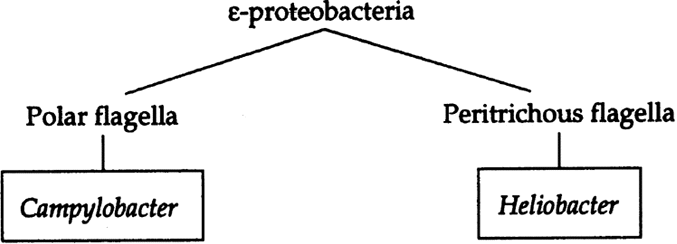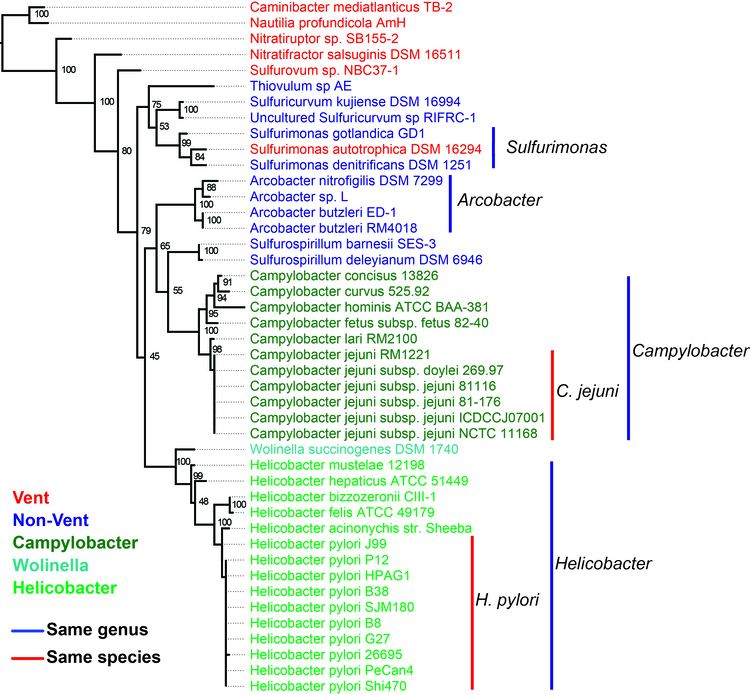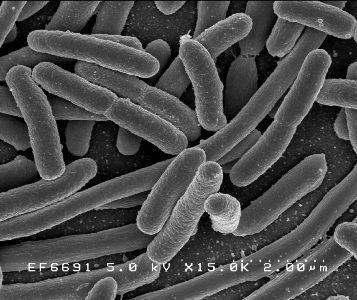Domain Bacteria Higher classification Proteobacteria | Phylum Proteobacteria Rank Class | |
 | ||
Lower classifications Helicobacter, Campylobacteraceae | ||
Medical vocabulary what does epsilonproteobacteria mean
Epsilonproteobacteria are a class of Proteobacteria. All species of this class are, like all Proteobacteria, Gram-negative.
Contents
The Epsilonproteobacteria consist of few known genera, mainly the curved to spirilloid Wolinella spp., Helicobacter spp., and Campylobacter spp. Most of the known species inhabit the digestive tracts of animals and serve as symbionts (Wolinella spp. in cattle) or pathogens (Helicobacter spp. in the stomach, Campylobacter spp. in the duodenum).

Numerous environmental sequences and isolates of Epsilonproteobacteria have also been recovered from hydrothermal vents and cold seep habitats. Examples of isolates include Sulfurimonas autotrophica, Sulfurimonas paralvinellae,Sulfurovum lithotrophicum and Nautilia profundicola. A member of the class Epsilonproteobacteria occurs as an endosymbiont in the large gills of the deepwater sea snail Alviniconcha hessleri.

The Epsilonproteobacteria found at deep-sea hydrothermal vents characteristically exhibit chemolithotrophy, meeting their energy needs by oxidizing reduced sulfur, formate, or hydrogen coupled to the reduction of nitrate or oxygen. Autotrophic Epsilonproteobacteria use the reverse Krebs cycle to fix carbon dioxide into biomass, a pathway originally thought to be of little environmental significance. The oxygen sensitivity of this pathway is consistent with their microaerophilic or anaerobic niche in these environments, and their likely evolution in the Mesoproterozoic oceans, which are thought to have been sulfidic with low levels of oxygen available from cyanobacterial photosynthesis.

Phylogeny
The currently accepted taxonomy is based on the List of Prokaryotic names with Standing in Nomenclature (LPSN) and National Center for Biotechnology Information (NCBI) and the phylogeny is based on 16S rRNA-based LTP release 106 by 'The All-Species Living Tree' Project
Notes:
